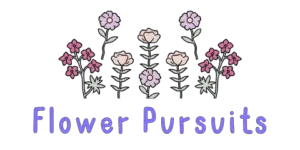Do you love the bright, cheerful faces of sunflowers? Are you an avid gardener, who enjoys watching their blooms appear each summer? Unfortunately, all good things come to an end, and sunflowers are no exception.
If you’re wondering what to do when your sunflowers die, you’ve come to the right place.
In this article, we’ll discuss the reasons why sunflowers die, as well as the benefits of composting, burying, and drying your sunflower heads.
Read on for some helpful tips for gardeners on what to do when their sunflowers die.
Table of Contents
Short Answer
When sunflowers die, the best thing to do is to cut the stems off of the plant and discard them.
If you want to save the seeds, then you can carefully remove them from the flower head and store them in a paper bag or envelope.
Once the seeds have been removed, you can then add compost or mulch to the soil to replenish the nutrients.
Finally, you can replant new sunflowers in the area to enjoy the beauty of the flower for many years to come.
Why Sunflowers Die
Sunflowers, like all plants, are living beings and will eventually die.
There are a few different factors that can cause sunflowers to die prematurely.
The most common is environmental factors such as too much sun, too little sun, too much water, not enough water, and nutrient deficiencies.
Pests and disease can also cause sunflowers to die.
Insects such as aphids, spider mites, and stink bugs can feed on the leaves and flowers, while fungal and bacterial diseases can cause the plant to wilt and die.
Finally, sunflowers can also become too large for their environment and can simply outgrow their space.
Whatever the cause, once sunflowers die, it’s important to know how to properly dispose of them.
Composting Sunflowers

Composting sunflowers is an excellent way to give back to your garden and provide valuable nutrients to your soil.
Its an easy process that will help your other plants thrive.
To begin, cut the stem and leaves off the flower and place them in a compost bin or pile.
If you dont have a compost bin, you can also bury the sunflowers in the ground.
This will add valuable nutrients to the soil that can help other plants in your garden grow.
When burying the sunflowers, make sure to bury them deeply enough so that they dont sprout again.
Once the sunflower has been composted or buried, you can use the seed heads to make attractive decorations for your home or garden.
Start by cutting the sunflower head off the stem and drying it in a sunny spot.
Once the seed heads are dry, use string to hang them in a window or other sunny spot in your home.
You can also use the dried seed heads to make wreaths, wall hangings, and more.
Finally, sunflower seeds can be harvested from the heads and used as bird food or garden seed.
Start by cutting the heads off the stems and spreading them on a flat surface.
With a fork or your fingers, you can gently separate the seeds from the head.
When youre finished, store the seeds in a cool, dry place until youre ready to use them.
Composting sunflowers is an easy and effective way to give back to your garden.
Not only does it provide valuable nutrients to the soil, it can also create beautiful decorations for your home or garden.
So, when your sunflowers have died, dont throw them away! Compost them, bury them, or make decorations with them to enjoy all season long.
Bury Sunflowers in the Ground
When it comes to disposing of your dead sunflowers, one of the best options is to bury them in the ground.
This helps to provide the soil with essential nutrients, which can help other plants in your garden to grow and thrive.
When burying the sunflowers, it’s important to make sure to dig the hole deep enough so that the sunflowers won’t sprout again.
To do this, aim for a depth of at least 8 inches.
This will help to ensure that the sunflowers decompose without any issues.
Once the hole has been dug, you can place the sunflowers inside and cover them with soil.
It’s important to note that you should not fill the hole with water or other liquids as this can cause the sunflowers to rot too quickly and not provide the necessary nutrients to the surrounding soil.
Once the sunflowers have been buried, you should keep an eye on the area to make sure that no new sunflowers start to sprout.
If they do, you can easily pull them out and start the process over again.
By burying the sunflowers, you can provide your garden with essential nutrients while also avoiding the hassle of composting.
While it’s a bit more labor-intensive than composting, it’s still a great option for disposing of your dead sunflowers.
Drying Sunflower Heads

When it comes to what to do with sunflower heads after the blooms have died, many gardeners turn to drying them to create beautiful decorations for their homes and gardens.
Drying sunflower heads is an easy process and can be done in a variety of ways.
The most common method of drying sunflower heads is to cut the stem and leaves off the flower and hang the head upside down in a well-ventilated space.
This will allow the moisture to evaporate out of the head, leaving the flower completely dry.
Make sure to hang the flower heads far enough away from any heat sources so they dont scorch.
Another option is to place the sunflower heads in a paper bag and hang them in the same well-ventilated space.
This will help the sunflower heads dry out more evenly.
You can also place them in a shallow container and put them in the oven on the lowest setting for a few hours.
This should help speed up the drying process.
Once the sunflower heads are completely dry, you can use them to make beautiful decorations for your home or garden.
You can make wreaths, garlands, or bouquets with the dried flowers.
You can also scatter them on tables or displays for an added touch of whimsy.
Drying sunflower heads is a great way to make use of the flowers even after they have died.
Its an easy process that can help you create stunning decorations for your home or garden.
Plus, theyll last much longer than fresh flowers.
So the next time your sunflowers die, dont throw them away! Instead, consider drying them to make beautiful decorations.
Benefits of Composting Sunflowers
Composting sunflowers can be a great way to give your garden an extra boost of nutrients, while also helping to reduce waste.
Composting sunflowers is easy to do.
All you have to do is cut the stem and leaves off the flower, and put them into a compost bin or pile.
The sunflower seed heads can also be added to the compost, and they will eventually rot and provide nutrients for your garden.
Composting sunflowers also helps to create a healthy environment for your garden.
It helps to break down organic matter, providing essential nutrients for other plants in your garden.
Plus, composting sunflowers helps reduce the amount of waste that is sent to landfills.
By composting your sunflowers, you can help the environment by reducing the amount of waste that is produced.
Benefits of Burying Sunflowers

When it comes to disposing of your dead sunflowers, one of the best options is to bury them in the ground.
Burying sunflowers not only helps you to quickly get rid of them, but it also has several other benefits.
First of all, burying sunflowers provides your garden with much-needed nutrients.
As the sunflower decomposes, it releases essential nutrients such as nitrogen and phosphorus into the soil, which can help other plants in your garden grow and thrive.
Furthermore, burying sunflowers also helps to improve the structure of your soil, as it helps to break up compacted soil and improve drainage.
It is also important to remember to bury your sunflowers deeply enough so that they don’t sprout up again.
It is best to bury them about four to six inches deep.
Additionally, you can also add a layer of mulch over the top of the buried sunflowers to help keep them from coming back.
Finally, burying sunflowers is a great way to quickly get rid of them without having to create a compost pile or take them to the dump.
This is especially helpful if you don’t have a compost bin or don’t have the time to create one.
Overall, burying sunflowers is a great option for disposing of them quickly and easily, while also providing your garden with much-needed nutrients and improving the structure of your soil.
Just make sure to bury them deeply enough so that they don’t sprout up again.
Benefits of Drying Sunflower Heads
When it comes to what to do with sunflower heads after they have died, one great option is to dry them.
Drying sunflower heads is a great way to preserve their beauty and create attractive decorations for your home or garden.
There are several benefits to drying sunflower heads.
First, drying sunflower heads will preserve the color and the shape of the flower.
By drying the heads, you can keep the vibrant yellow and orange hues of the sunflowers and keep them looking beautiful for longer.
This is especially helpful if you want to use the sunflower heads as decorations in your home or garden.
Second, drying sunflower heads will also help to preserve the seeds.
Once the heads are dried, you can remove the seeds and use them for replanting or as food for birds.
This is a great way to ensure that the sunflowers can be enjoyed for many years to come.
Finally, drying sunflower heads is also a great way to create attractive decorations for your home or garden.
The dried heads can be used to make wreaths, garlands, and other decorations that will add a touch of beauty to any space.
Dried sunflower heads can also be used to make art projects or crafts, such as sunflower wall hangings or sunflower potpourri.
Overall, drying sunflower heads is a great way to preserve their beauty and create attractive decorations for your home or garden.
It is also an easy and affordable way to make sure that the sunflowers can be enjoyed for many years to come.
Final Thoughts
Now that you know what to do when sunflowers die, it’s time to put it into action.
Composting sunflowers helps create nutrient-rich soil for your garden, burying sunflowers helps the soil and prevents them from growing again, and drying sunflower heads makes for attractive decorations.
All of these options will help you get the most out of your sunflower plants and create a beautiful garden.
So go ahead and get to composting, burying, and drying those sunflowers!.

